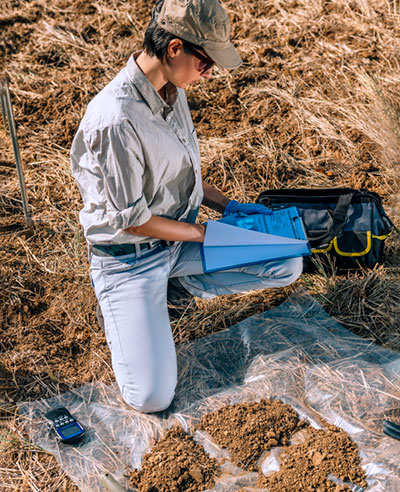Geotechnical Engineering
Stronger Foundations
During the past decade, the demand for geotechnical engineers has increased dramatically, and this demand is likely to increase further over the next decade. Stronger and more reliable infrastructure can help protect homes, utilities, and transportation routes. Geotechnical Engineering research at Clemson includes experimental and analytical investigations of soil liquefaction, earthquake ground response, braced excavation systems, pile foundations, landslides, and dynamic soil and rock properties.
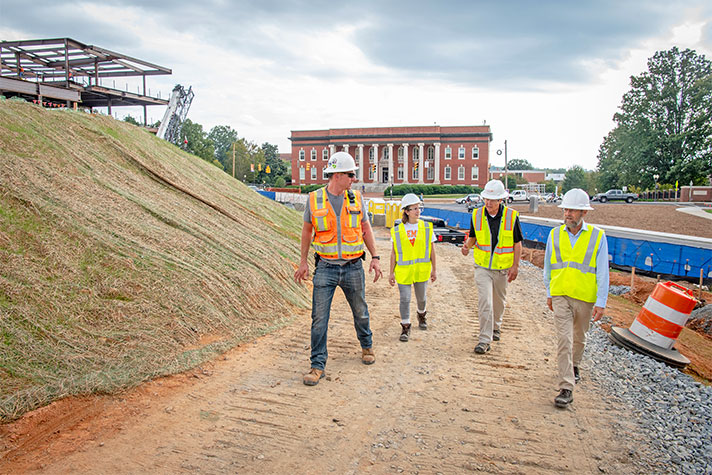

Graduate Studies
An advanced degree in civil engineering with an emphasis on geotechnical engineering is considered by many to be a minimum requirement to enter practice in this field. At Clemson University, the primary emphasis of geotechnical engineering study is in the area of geo-mechanics.
A wide range of mechanics-oriented graduate courses, including structural and geotechnical engineering courses, are offered. These courses, along with courses offered in related fields such as geological sciences and environmental engineering, allow each student to tailor a course of study that meets the requirements for an advanced degree in civil engineering with an emphasis in geo-mechanics.
Geotechnical Engineering Research
Research in geotechnical engineering within the Glenn Department of Civil Engineering often focuses on load behavior and the strength of the soil substrate. It also focuses on the use of biomass as an organic, renewable energy source.
Next-Gen Modeling
Qiushi Chen is part of a 1.8 Million Research Grant studying the next generation of biorefinery process design through a collaboration among Clemson, Idaho National Laboratory (INL), and University of Texas at San Antonio (UTSA). "Biomass processing has proven to be the Achilles heel of pioneer biorefineries. The models developed by this team will contribute to the design tools needed to overcome these challenges and can have a substantial impact on the biorefining industry," said Kevin Kenney, Director of the INL Bioenergy Program.
Biomass Research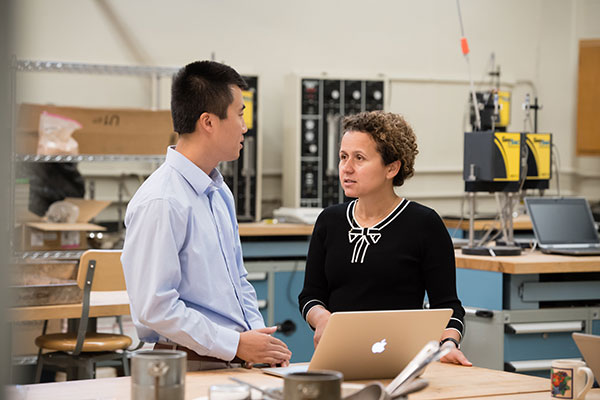
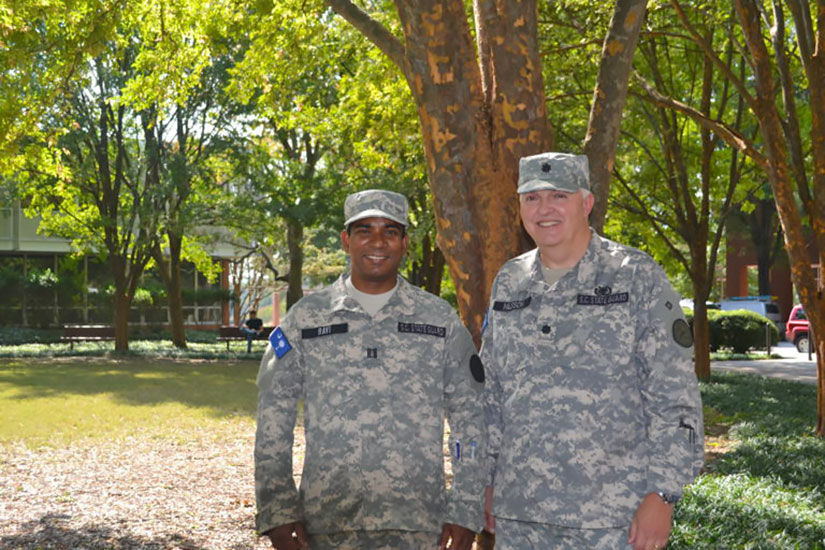
Engineered to Serve
Nadarajah Ravichandran joined the department in 2008. Eight years later, he became a US citizen and wanted to give back to his country. He joined the South Carolina State Guard, an organization of volunteers, with a mission to provide in-state support for the National Guard, law enforcement, and other state and local agencies in times of emergency. He found great personal satisfaction in using engineering skills to help relieve the suffering of fellow beings.
Ravichandran's StoryPressure Points
South Carolina is located within a plate rather than a plate boundary, where most earthquakes occur. Ronald Andrus is often sought out for his expert view on earthquakes in the region. “Concerning the earthquakes at Jenkinsville, they were located near the Monticello reservoir, and when you build a reservoir, that does two things - it adds weight to the ground that wasn't there for a while and also changes the groundwater, and when you change the groundwater you're changing pressures.”
Regional Tremors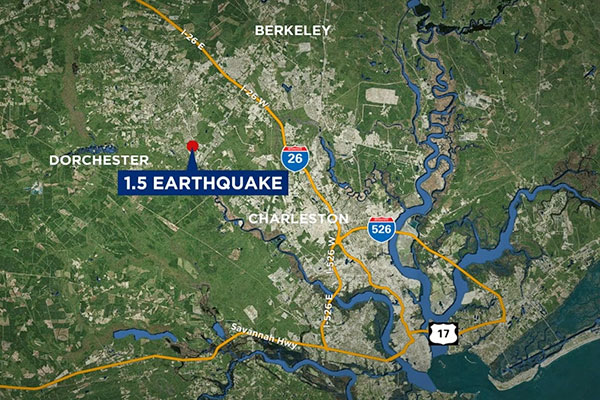
Increasing Foundational Stability
Geotechnical Engineering is the field of civil engineering that examines soil, rock, and groundwater behavior under load forces and retention. It is also referred to as Geotechnics.
-
Facilities
The Geotechnical Engineering Facilities occupy about 3500 square feet of floor space and have standard and advanced testing equipment. Advanced soil mechanics testing equipment includes four Trautwein GeoTAC computer-automated workstations for consolidation, triaxial, direct shear, and permeability testing; two 3-position pressure panels; and one shake table for relative density testing.
Advanced soil dynamics testing equipment includes one four-channel dynamic signal analyzer (Agilent 35670A); various velocity and acceleration sensors; two modally turned impact hammers of different sizes; and one free-free resonant column/pulse test system. This equipment can be used for determining small-strain dynamic properties (i.e., Young’s modulus, shear modulus, Poisson’s ratio, damping ratio) of various civil engineering materials in both the laboratory and field. Field tests possible with the equipment include spectral analysis of surface waves (SASW), seismic crosshole and downhole, reflection/refraction, and vibration monitoring.
Computational facilities include networked PCs and workstation clusters. PCs and printers are located in all faculty offices, most graduate offices, and all geotechnical engineering laboratories. In addition, the University has state-of-the-art high-performance computing capabilities that are available for research purposes.
-
Research

Geotechnical Engineering research in the Department of Civil Engineering at Clemson University includes both experimental and analytical investigations of soil liquefaction, earthquake ground response, braced excavation systems, pile foundations, landslides, and dynamic soil/rock properties.
Read about the "Characterization of Liquefaction Resistance of Aged Soils" research project.
Selected Recent Publications
Balon, D.R. and Andrus, R.D. (2006), "Liquefaction potential index of soils in Charleston, South Carolina based on the 1886 earthquake," Proceeding of the 8th National Conference on Earthquake Engineering, EERI, held in San Francisco, CA, April 18-22.
Juang, C.H., Fang, S.Y., and Khor, E.H. (2006), "First order reliability method for probabilistic liquefaction triggering analysis using CPT," Journal of Geotechnical and Geoenvironmental Engineering, ASCE, Vol. 132, No. 3.
Zhang, J., Andrus, R.D., and Juang, C.H. (2005), "Normalized shear modulus and material damping ratio relationships," Journal of Geotechnical and Geoenvironmental Engineering, ASCE, Vol. 131, No. 4, pp. 453-464.
Andrus, R.D., Paratheepan, P., Ellis, B.S., Zhang, J., and Juang, C.H. (2004), "Comparing liquefaction evaluation methods using penetration-VS relationships," Journal of Soil Dynamics and Earthquake Engineering, Vol. 24, pp. 713-721.
Andrus, R.D., Stokoe, K.H., II, and Juang, C.H. (2004), "Guide for shear wave-based liquefaction potential evaluation," Earthquake Spectra, EERI, Vol. 20, No. 2, pp. 285-308.
Juang, C.H., Yuan, H., Lee, D.H., and Lin, P.S. (2003), "Simplified CPT-based method for evaluating liquefaction potential of soils," Journal of Geotechnical and Geoenvironmental Engineering, ASCE, Vol. 129, No. 1, pp. 66-80.
Juang, C.H., Jiang, T., and Andrus, R.D. (2002), "Assessing probability-based methods for liquefaction evaluation," Journal of Geotechnical and Geoenvironmental Engineering, ASCE, Vol. 128, No. 7, pp. 580-589.
Andrus, R.D. and Stokoe, K.H., II (2000), "Liquefaction resistance of soils from shear wave velocity," Journal of Geotechnical and Geoenvironmental Engineering, ASCE, Vol. 126, No. 11, pp. 1015-1025.
Juang, C.H., Chen, C.J., Tang, W.H., and Rosowsky, D.V. (2000), "CPT-based liquefaction analysis, Part 1: Determination of limit state function," Geotechnique, Vol. 50, No. 5, pp. 583-592.
Juang, C.H., Chen, C.J., Rosowsky, D.V., and Tang, W.H. (2000), "CPT-based liquefaction analysis, Part 2: Reliability for design, Geotechnique, Vol. 50, No. 5, pp. 593-599.
-
People
Ron D. Andrus
LGeotechnical Engineering; Soil Dynamics; Site Characterization; Non-Destructive Testing; Earthquake Engineering; Earthquake Hazard Mapping; Liquefaction; Slope Stability and Shear Strength
Quishi Chen
Computational Geomechanics, Multiscale and Multiphysics Problems in Porous Materials, Discrete Element Modeling, Image-based Characterization and Modeling, Risk Assessment and Random Field-based Mapping of Liquefaction Hazards
N. Ravi Ravichandran
Computational Modeling, High Performance Computing; Multiphase Porous Media; Centrifuge Testing; Constitutive Modeling of Multiphase Porous Media/p>
